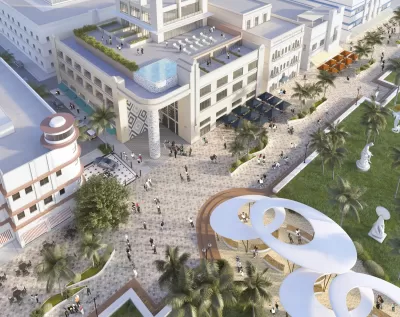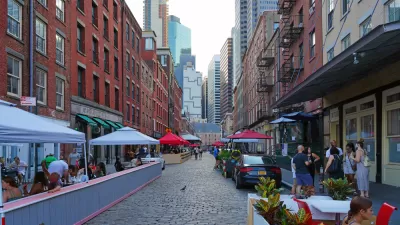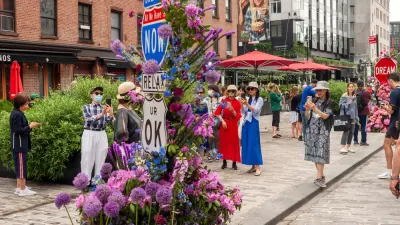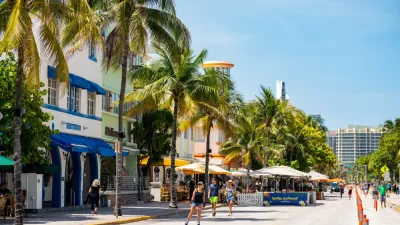Miami Beach reopened Ocean Drive to vehicles earlier this year at the request of hotel owners. So many pedestrians showed up to the famous street on a weekend earlier this month, however, that cars were blocked once again.

"Ocean Drive was 'organically' closed to car traffic over the weekend – forced by throngs of pedestrians crowded into the area," according to an article published by Next Miami on March 23.
The news of the street closure was first reported on the Twitter feed of Better Streets Miami Beach, a local active transportation advocacy group.
Ocean Drive was closed to automobile traffic in 2020 while cities all over the country and world were deploying open streets (or Al Fresco Streets) as a response to the lockdowns and relative lack of automobile travel during the first months of the pandemic.
Fast forward to 2022, and Miami Beach started allowing automobile traffic back onto Ocean Drive on January 24, 2022. It wasn't the first time the city tried to allow cars back onto the drag—they made a similar move around the 4th of July holiday in 2020—but he 2022 decision to reopen the street to automobiles followed a bitter battle, including a lawsuit, between local residents and hotel owners along the street. The Miami Herald reported on the legal controversy in a paywalled article published in January. A plan to permanently pedestrianize the street produced some beautiful renderings, but hasn't yet won the day.
FULL STORY: Pedestrians ‘Organically’ Take Back Ocean Drive After Commissioners Reopen It To Car Traffic

Trump Administration Could Effectively End Housing Voucher Program
Federal officials are eyeing major cuts to the Section 8 program that helps millions of low-income households pay rent.

Planetizen Federal Action Tracker
A weekly monitor of how Trump’s orders and actions are impacting planners and planning in America.

Ken Jennings Launches Transit Web Series
The Jeopardy champ wants you to ride public transit.

California Invests Additional $5M in Electric School Buses
The state wants to electrify all of its school bus fleets by 2035.

Austin Launches $2M Homelessness Prevention Fund
A new grant program from the city’s Homeless Strategy Office will fund rental assistance and supportive services.

Alabama School Forestry Initiative Brings Trees to Schoolyards
Trees can improve physical and mental health for students and commnity members.
Urban Design for Planners 1: Software Tools
This six-course series explores essential urban design concepts using open source software and equips planners with the tools they need to participate fully in the urban design process.
Planning for Universal Design
Learn the tools for implementing Universal Design in planning regulations.
Ada County Highway District
Clanton & Associates, Inc.
Jessamine County Fiscal Court
Institute for Housing and Urban Development Studies (IHS)
City of Grandview
Harvard GSD Executive Education
Toledo-Lucas County Plan Commissions
Salt Lake City
NYU Wagner Graduate School of Public Service





























